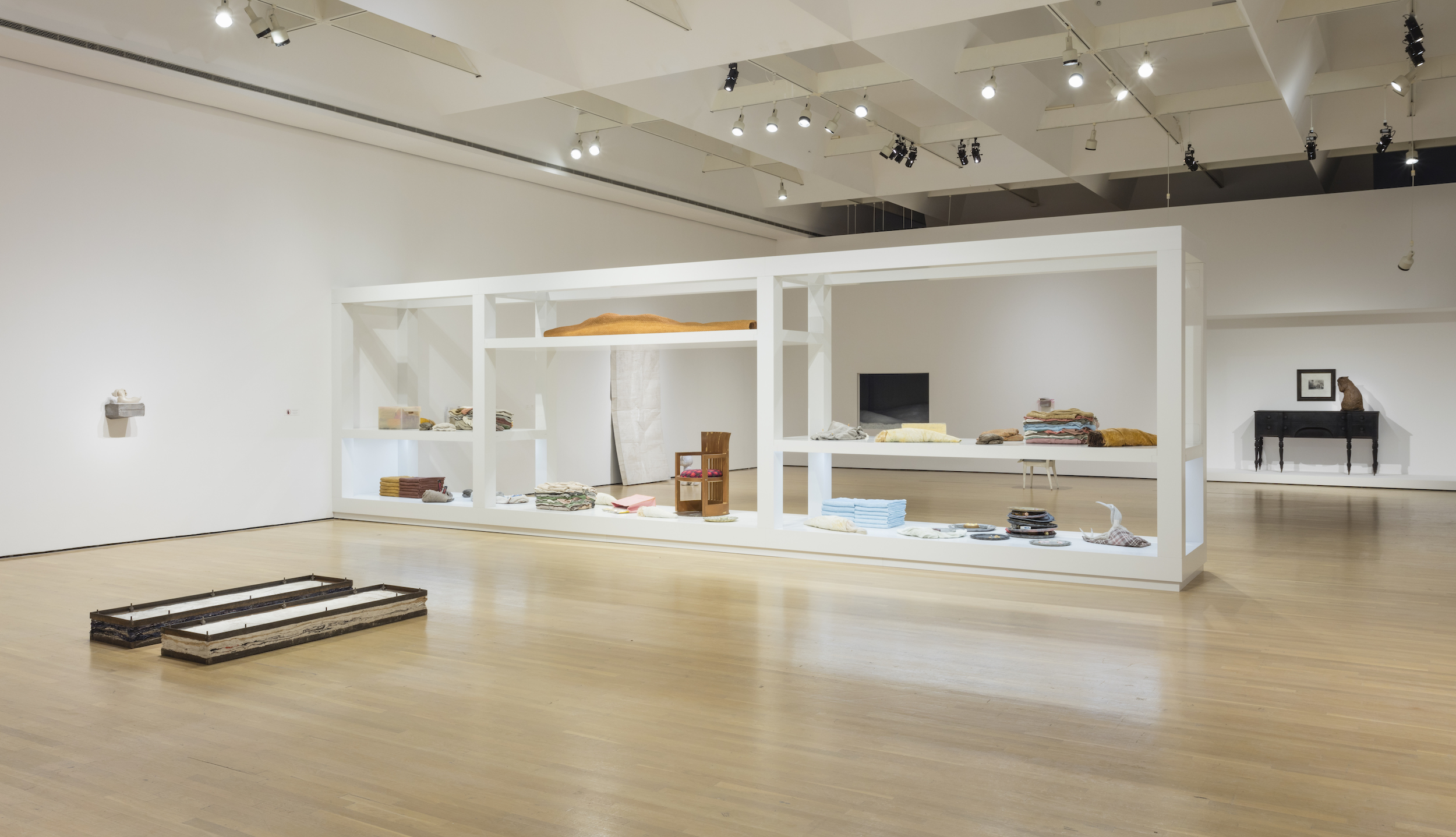
Views of the exhibition Liz Magor. Habitude presented at Musée d’art contemporain de Montréal, from June 22 to September 5, 2016. Photo: Richard-Max Tremblay.
The largest survey of Liz Magor’s work to date is currently on view at the Musée d’art contemporain de Montreal. Delicate assemblages of clothing, animals, and toys appear at first as the work of an obsessive hoarder, but closer examination rewards viewers with an intimately poetic take on materiality in relation to the manmade and natural worlds that surround us. Curated by Dan Adler, an associate professor of modern and contemporary art at York University in Toronto, and Lesley Johnstone, the head of exhibitions at the Musée d’art contemporain de Montréal, the exhibition tunes into the melodies explored and expressed by the artist over several decades.
Magor’s work is more relevant now than it ever has been. “Her work has been a part of our psyche for many years,” Johnstone said, remarking on the resurgence of materiality in sculptures by many of Canada’s emerging artists.1 “I think it’s about giving permission to another way of making and thinking about art,” Adler continued; “We live in a world where the immaterial has become so much more powerful in our lives as ’net-based experiences are becoming more pervasive.”
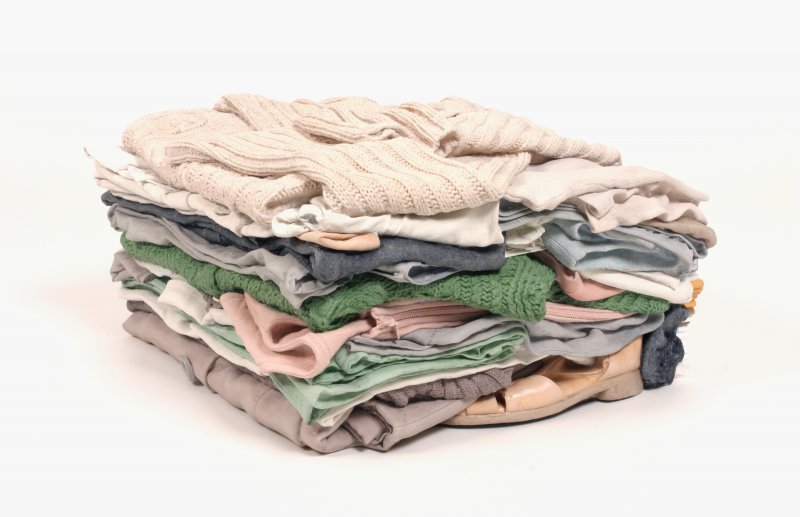
Liz Magor. Carton II, 2006. Polymerized gypsum, cigarettes, gum, matches, lighter. Edition ½ , 29 x 53 x 48 cm. Collection of the Musée d’art contemporain de Montréal. Photo: Richard-Max Tremblay.
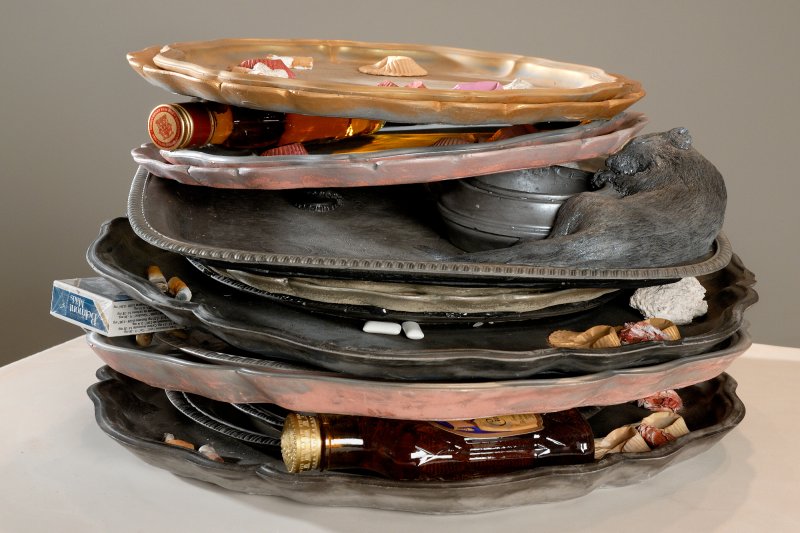
Liz Magor. Stack of Trays, 2008. Polymerized gypsum, chewing gum, found objects, 25 x 45 x 47 cm. Private collection, Calgary. Photo: Scott Massey.
The works in Habitude are presented non-chronologically, showcasing a forty-year career that has maintained a truthfulness through sculptures that speak to one another across decades. “We’re trying to create conversations,” Johnstone explained, “placing works from the ’70s and ’80s in dialogue with works that are more recent.” Adler added, “We’re trying to create unexpected relationships. [Liz] has been discussing the same things in different ways throughout her career.”
Filling three galleries, Habitude begins with sculptures of similar scale that address notions of hoarding and production. A custom shelving unit was built for the second gallery, where Magor’s sculptures are carefully arranged in dialogue with one another. The artist’s aversion to pedestals exemplifies her dedication to finding meaning in the ordinary, but it presents a curatorial challenge that requires unique solutions like the custom shelves and sculptures held up by cast cardboard boxes. The final gallery differs dramatically from the two preceding ones, holding a single installation: a cabin, titled Messenger. “One of the biggest challenges was the selection—sifting through everything Liz has done over the past forty years, and trying to understand what would work well together,” said Adler, “but it was a really fun challenge.”
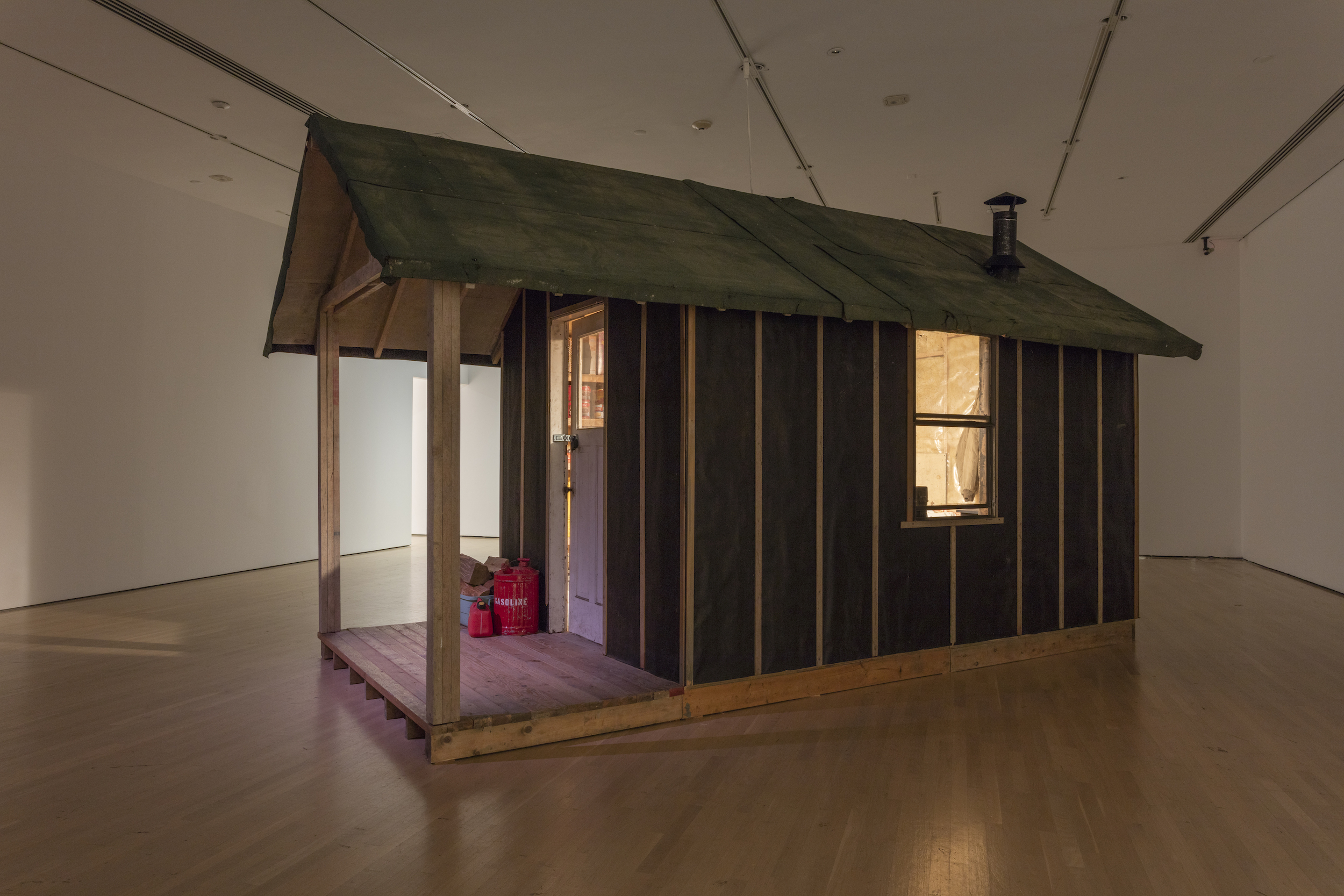
Liz Magor. Messenger. Views of the exhibition Liz Magor. Habitude presented at Musée d’art contemporain de Montréal, from June 22 to September 5, 2016. Photo: Richard-Max Tremblay.
The exhibition’s title refers both to the habit of repeated actions and to the theme of addiction consistently expressed in Magor’s work. Cigarettes fill gloves, stacks of plates hide liquor bottles, and chocolate appears in the piles of possessions that conspicuously lack clear references to the humans who created, arranged, and abandoned them.
“I have a huge respect for an artist who has continued to explore materials and ideas, over a long period of time, always trying to find a new solution to something,” Johnstone said, “and also for the way that [the artist is] playing with things that are highly recognizable and still constantly surprising us.”
“There’s confusion between what’s been cast and what’s real—you’re really not sure what you’re looking at,” Johnstone continued, “going back and forth between the objects and the way that [the artist] involves us in that discussion. It’s a very active kind of perception: it’s about asking us to look at the way the world is, and when you leave the gallery, you look at things differently.”
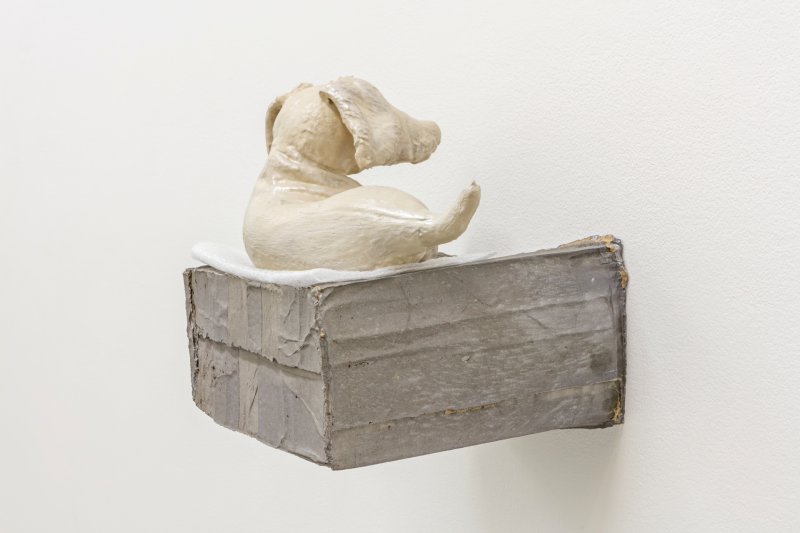
Liz Magor. Pearl Pet, 2015. Polymerized gypsum, polyethylene, 27 x 29 x 26 cm. Courtesy of the Shlesinger-Walbohm Family Collection, Toronto. Photo: Toni Hafkenscheid.
Magor’s work shows no signs of the artist slowing down. “The level of intimacy and profound isolation that you can feel when confronting these newer works is remarkable, given how humble their materials are,” Adler said. “A work that comes from such mundane origins can convey something so profound… In her work, her understanding of materials comes through in different ways. I see her as one of the great assemblage artists—a master of making.”
“When it comes to Liz’s work, it’s really about the first-hand experience,” Johnstone said, “Much of it resists description. You need to actively move around it and feel it, not just visually but with your other senses as well.” In Magor’s work, curiosity and contemplation are on par with meditation. “People who think they know Liz’s works will come across a number of unexpected works in the show,” Adler said.
What do the curators hope viewers will take away from the exhibition? For Johnstone, “surprise, curiosity, respect”; for Adler, “a renewed faith in what sculpture can do.”
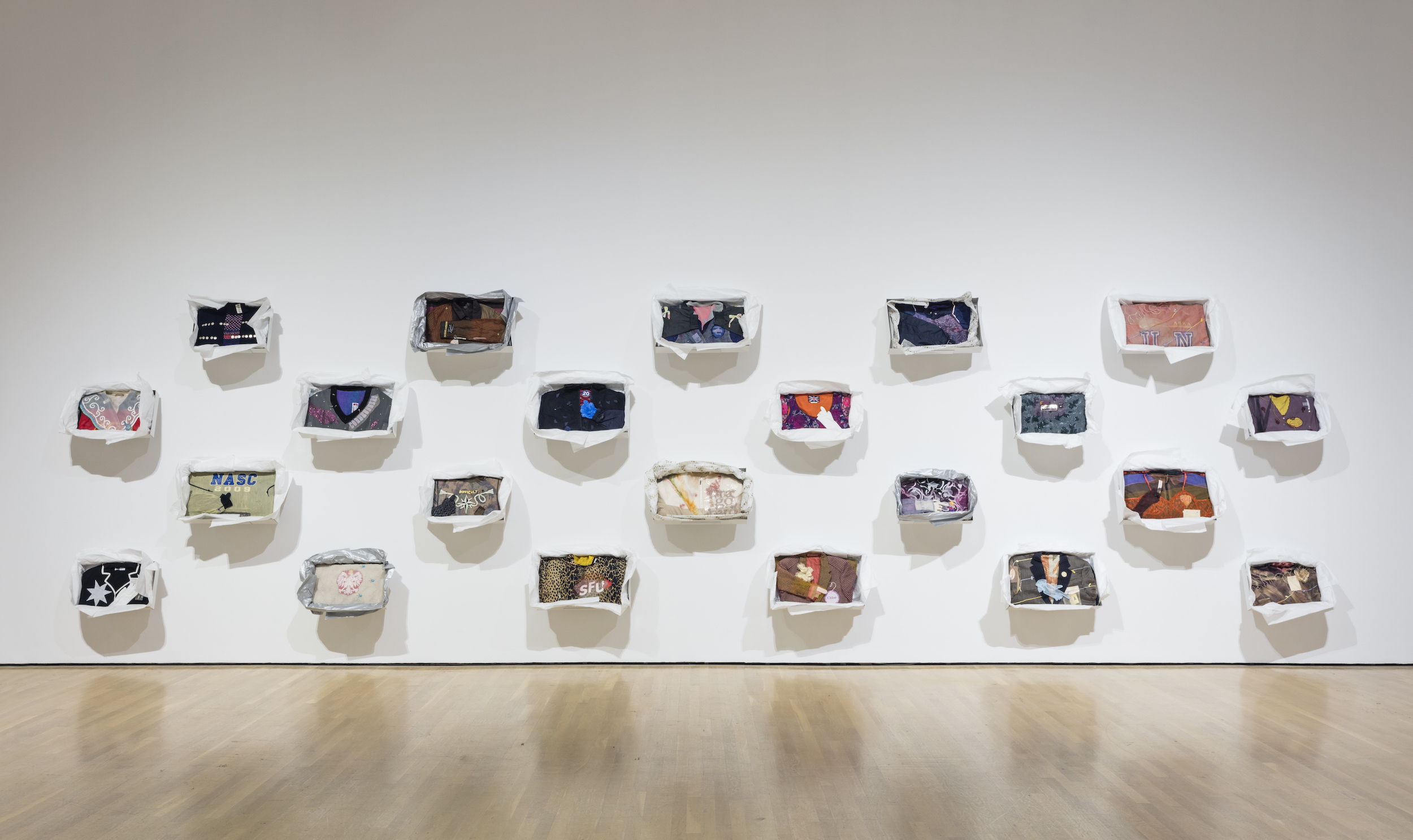
Views of the exhibition Liz Magor. Habitude presented at Musée d’art contemporain de Montréal, from June 22 to September 5, 2016. Photo: Richard-Max Tremblay.
1. All quotes are from a phone interview with the author on June 14, 2016.




Pingback: Staff Picks: August 2016 | ART21 Magazine